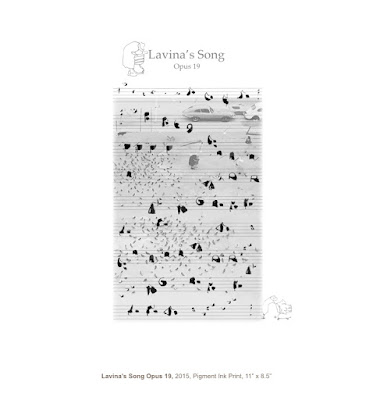 |
| March CQA speaker Elizabeth Spannring (left) and CQA president Colleen Wise |
[Editor's note: All images in this post are used with the permission of the artists.]
Spannring has been quilting for 25 years, and was executive director of the former Association of Pacific West Quilters (nee Association of Pacific NW Quilters: APNQ), producers of juried and judged shows last held in Tacoma. It was during her various volunteer positions with APNQ that, in 2002, she decided to enter the Northern California Council's judging certification program. In 2005 she joined the National Quilting Association's judging program and, in 2006, became a certified NQA judge.
Spannring is the only US judge also certified in Canada. She explained that Canadian show judging can be quite different from most US shows, in that show sponsors are more strict about entries that involve patterns, kits, classes, derivative work, etc. These are all put into a class by themselves, and the Best of Show must always be entirely original work.
In outlining the responsibilities of a juror (Evaluate the work objectively based on principles of design, review the artist's intent, evaluate techniques, rank entries, select accepted entries), Spannring pointed out that the quilt world is really quite small, and jurors must maintain confidentiality about all aspects of the jurying--no comments may be made or reported outside of the jurors' process, about any of the entries or entrants if recognized, or selected or rejected entries.
 |
| This "wholecloth" (above) quilt is actually stitched leather....and the "traditional" quilt (below) is created from plastic animal-feed bags! |
Spannring noted that one of the first challenges confronting jurors can be as simple as "What is quilt?" Many organizations have defined "quilt" as 3 layers held together by stitching or other means, but increasingly there have been many surprising developments in what some of those layers may comprise. Spannring showed what appeared to be a wholecloth quilt that was made from leather! (It was indeed stitched....) Another surprise was a piece very traditional in appearance that was made from plastic animal-feed bags! "3-D work can also be a challenge to evaluate," said Spannring, adding "What is it? How can it be evaluated?"
 |
| Evaluating 3-D work is a definite challenge for jurors |
 |
| Another challenge in jurying can come when determining if a piece is derivative...or not! |
She pointed out that jurors hear the artist's statement read, while judges do not: "Sometimes the piece's title makes clear what it's supposed to be. Other times, without the title or artist's statement, you have to make a decision only on the design." She then added, "There can sometimes be a big difference between the quilt and the artist's statement!".
 |
| (Above and below) Could a juror determine what these are by title alone? Would the typical artist's statement clarify the artist's intent? |
Evaluating pieces in a series can be another challenge. Spannring: "Do the jurors pick one over another? Is one piece more successful than another? Show both? Together? Separately?
 |
| For a series: Choose one? Both? Show together? Separately? Decisions, decisions... |
 |
| A famous quilt jurors would have to pretend to have never seen before! |
She noted that the Judge's Choice award is the only time a judge can be subjective. ("Everyone knows I am a sucker for a cat quilt," she laughed.) It's critical that a juror be aware of his/her personal likes and dislikes, and instead confine evaluations to design principles: shape, movement, line, texture, color, balance, value. Color awards must consider if a piece were to be done in a different colorway, would it be more or less successful.
 |
| Spannring admits to being "a sucker for a cat quilt" when it comes to "Judge's Choice"! |
Spannring stressed that "As jurors, we're judging what's in front of us, not the quilter. And no one technique is any better than another." Actual technique can be hard to see in a photo the juror sees; the use of beads and "bling" needs to be carefully considered: are they distracting or an integral part of the design? All of which leads to a restatement of a "first principle": Quality photography done exactly to a show's specifications is critical for proper jury evaluation of an entry.
Before setting up a mock jury situation in the meeting, Spannring outlined the responsibilities of an organization's exhibit committee--all the decisions that need to be made before the jurors are called in to do their work. The show committee is responsible for selecting the show's theme and the selection criteria for entries, verifying the available space for quilt display, and creating an entry form. The committee is also responsible for setting the rules: size restrictions, age of pieces, construction requirements, and hanging and display requirements.
Then, giving the group a theme deliberately broad--"The Nature of Things"--Spannring ran through a digital-image show of 30 pieces, from which 15 were to be selected as "the show." After the first quick "look-see" run-through, attendees broke into small groups and made the usual "Yes/No/Maybe" initial selections within their groups. This resulted in a lot of spirited discussion about the merits (or not) of each piece.
Spannring then aggregated the majority selections from each group into a final group of 15...and when the metaphorical bell rang at the end of the meeting, members' opinions were widely scattered on the pieces selected and the overall cohesion of the "show" thus created. The wisdom of Spannring's parting statements was made clear: "The more information an organization gives a juror, the easier the juror's job is," she said, adding "For a really cohesive show, it's up to the show's producers to be specific and explanatory as to the theme."
As said at the top of this piece, it ain't as easy as it looks!












































